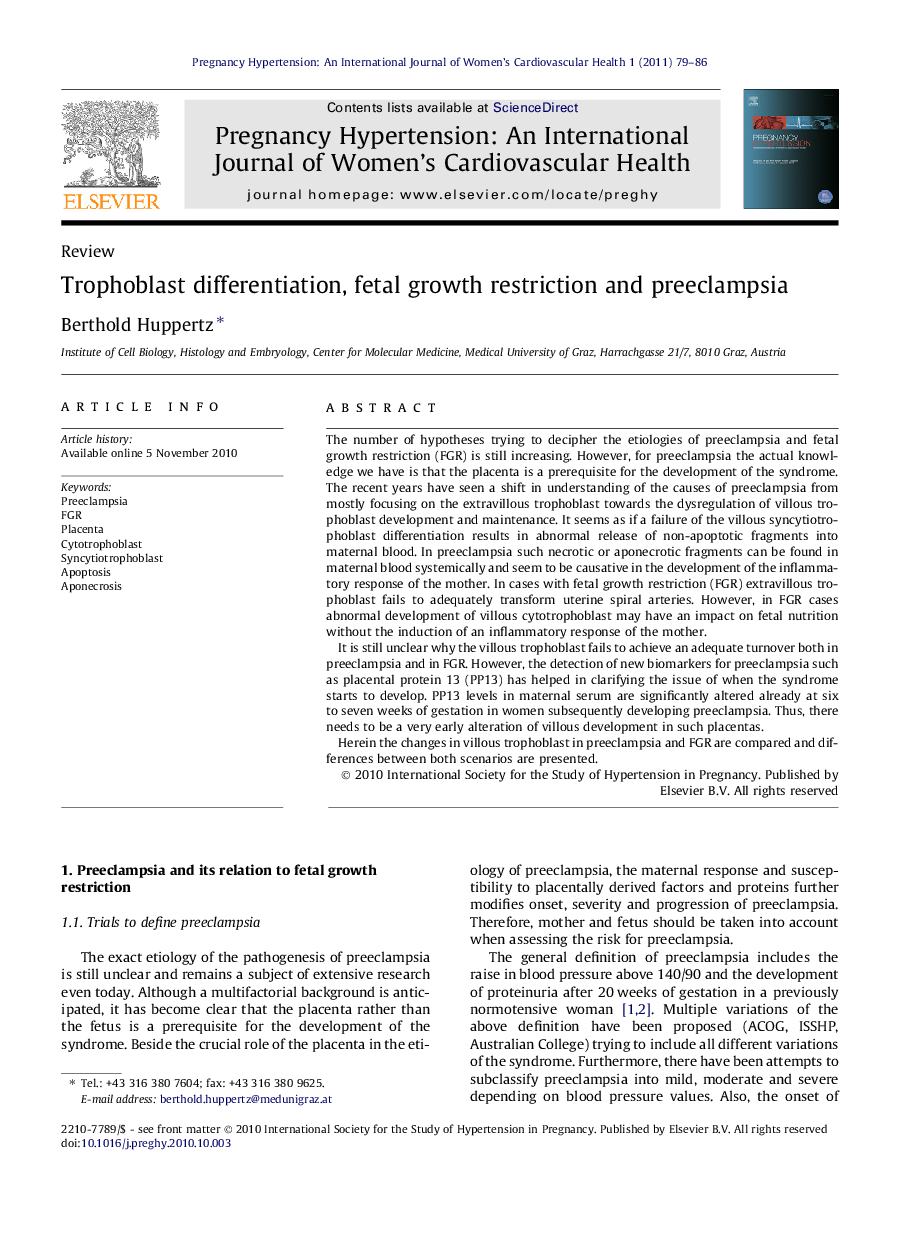| Article ID | Journal | Published Year | Pages | File Type |
|---|---|---|---|---|
| 5996869 | Pregnancy Hypertension: An International Journal of Women's Cardiovascular Health | 2011 | 8 Pages |
The number of hypotheses trying to decipher the etiologies of preeclampsia and fetal growth restriction (FGR) is still increasing. However, for preeclampsia the actual knowledge we have is that the placenta is a prerequisite for the development of the syndrome. The recent years have seen a shift in understanding of the causes of preeclampsia from mostly focusing on the extravillous trophoblast towards the dysregulation of villous trophoblast development and maintenance. It seems as if a failure of the villous syncytiotrophoblast differentiation results in abnormal release of non-apoptotic fragments into maternal blood. In preeclampsia such necrotic or aponecrotic fragments can be found in maternal blood systemically and seem to be causative in the development of the inflammatory response of the mother. In cases with fetal growth restriction (FGR) extravillous trophoblast fails to adequately transform uterine spiral arteries. However, in FGR cases abnormal development of villous cytotrophoblast may have an impact on fetal nutrition without the induction of an inflammatory response of the mother.It is still unclear why the villous trophoblast fails to achieve an adequate turnover both in preeclampsia and in FGR. However, the detection of new biomarkers for preeclampsia such as placental protein 13 (PP13) has helped in clarifying the issue of when the syndrome starts to develop. PP13 levels in maternal serum are significantly altered already at six to seven weeks of gestation in women subsequently developing preeclampsia. Thus, there needs to be a very early alteration of villous development in such placentas.Herein the changes in villous trophoblast in preeclampsia and FGR are compared and differences between both scenarios are presented.
